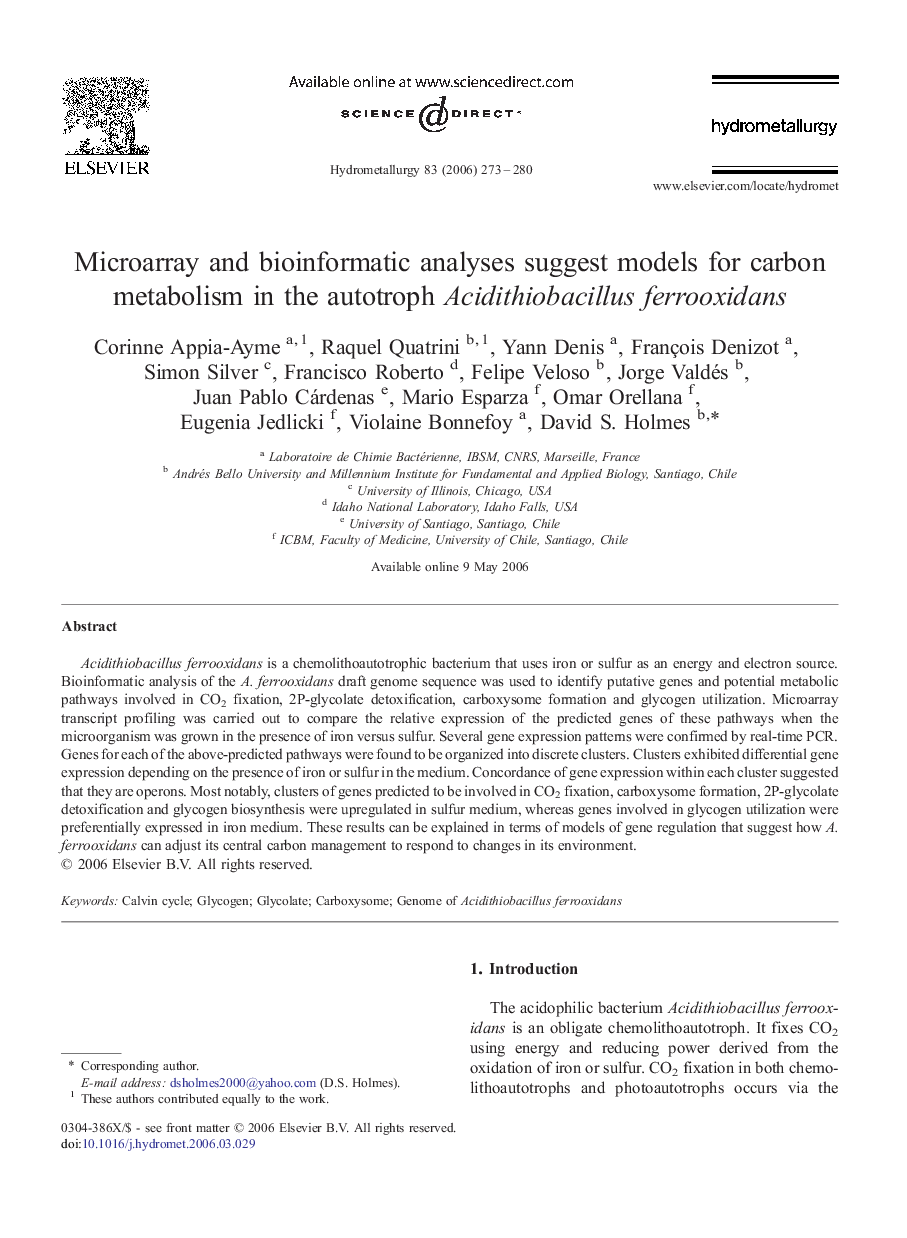| Article ID | Journal | Published Year | Pages | File Type |
|---|---|---|---|---|
| 213618 | Hydrometallurgy | 2006 | 8 Pages |
Acidithiobacillus ferrooxidans is a chemolithoautotrophic bacterium that uses iron or sulfur as an energy and electron source. Bioinformatic analysis of the A. ferrooxidans draft genome sequence was used to identify putative genes and potential metabolic pathways involved in CO2 fixation, 2P-glycolate detoxification, carboxysome formation and glycogen utilization. Microarray transcript profiling was carried out to compare the relative expression of the predicted genes of these pathways when the microorganism was grown in the presence of iron versus sulfur. Several gene expression patterns were confirmed by real-time PCR. Genes for each of the above-predicted pathways were found to be organized into discrete clusters. Clusters exhibited differential gene expression depending on the presence of iron or sulfur in the medium. Concordance of gene expression within each cluster suggested that they are operons. Most notably, clusters of genes predicted to be involved in CO2 fixation, carboxysome formation, 2P-glycolate detoxification and glycogen biosynthesis were upregulated in sulfur medium, whereas genes involved in glycogen utilization were preferentially expressed in iron medium. These results can be explained in terms of models of gene regulation that suggest how A. ferrooxidans can adjust its central carbon management to respond to changes in its environment.
